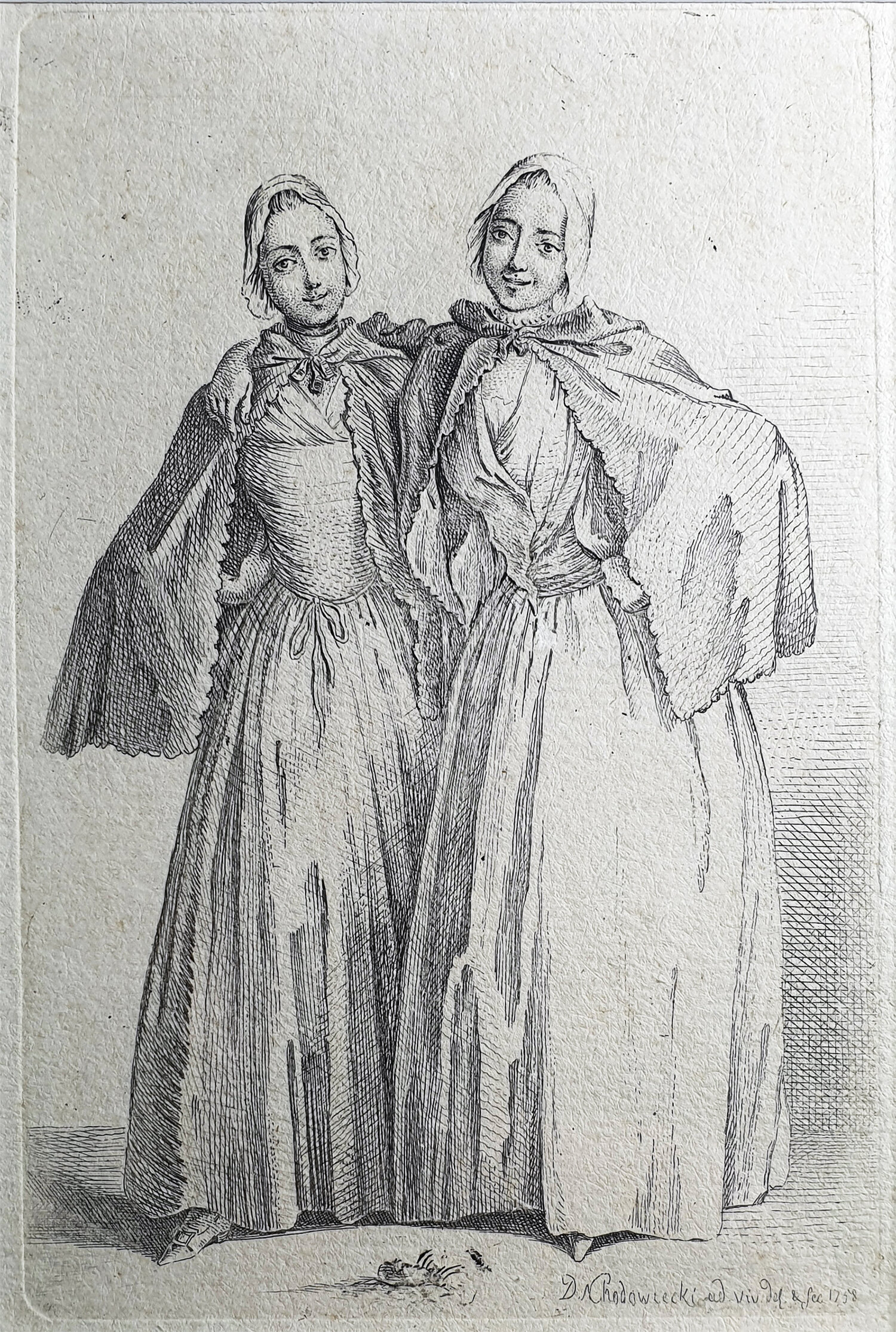Jenny Watson Feeding the Chooks (from ‘Child’s Play’ series) 2003, stone lithograph, 25.8 x 16.8 cm. Griffith University Art Collection, purchased 2004. © Jenny Watson. Courtesy the artist.
YOUTH
In a series of lithographs titled ‘Child’s Play’ (2003), Jenny Watson evokes a fairy tale mood with drawings of an Alice-in-Wonderland alter ego. Feeding the Chooks (2003) resonates with the hyperreal atmosphere of childhood memories, so that the banal activity becomes magical with transformative possibilities. The frenetic pecking of chooks, indicated by the jagged zigzag of their beaks and combs, doesn’t disturb the girl’s dreamy gaze.
The two young women in Daniel Chodowiecki’s etching Two Standing Ladies—Demoiselles Quantin (1758) also radiate boundless possibilities. They stand confidently in an affectionate embrace, with open, smiling faces. The delicate lines and soft tones of the etching suggest their impressionability, but also intelligence and sensibility. Sadly, the promise of their youth is undermined by what we know of social conditions for young women in their time. They were considered inferior to men in intellect and emotional stability, were generally only educated in domestic duties, and were expected to confine themselves to a convenient marriage, or other duties of care.
Later in the century, Mary Wollstonecroft wrote A Vindication of the Rights of Woman (1792) in which she insisted on women’s equal rights and proper education. This early example of feminist thought had little effect on society until it was rediscovered by women seeking the vote at the beginning of the twentieth century. Since then, women have won many freedoms, especially the opportunity to have a fulfilling career; yet, many have discovered that structural inequalities make their aspirations difficult to achieve.[1] The expectation that they take the larger share of unpaid housework and care for children and the elderly limits their achievements at work and increases the chance of poverty when marriages break up.
The acrobatic young woman in George Baldessin’s etching Performance (1971) is caught mid-backflip, performing gymnastics to fulfil the demands society makes. The red flags and smoking chimneys suggest goal-oriented workplaces and industrial complexes, while the folded picture plane destabilises her balance. The harsh background to the print is typical of Baldessin’s schematic suburban settings, consisting of renderings of corrugated iron, factory roofs, and smoke. The elimination of nature seems appropriate for our contemporary situation, where the natural world is in danger of irreparable damage from climate change and pollution. Young people now and into the future will ask their parents, as in Toni Robertson and Chip Mackinolty’s screenprint addressing nuclear war, “What did you do in the environmental crisis?”
(Anne Taylor Aug. 2019)
[1] Anne Summers, The End of Equality (Sydney: Random House, 2003), 260.
Daniel Chodowiecki Two Standing Ladies—Demoiselles Quantin 1758, etching, 13.5 x 9cm. Private collection.
Copyright © All rights reserved





